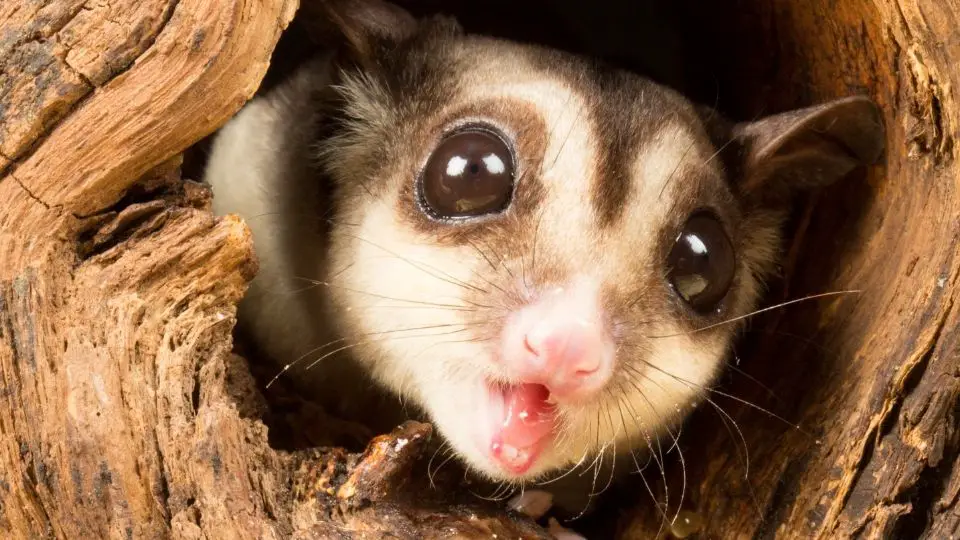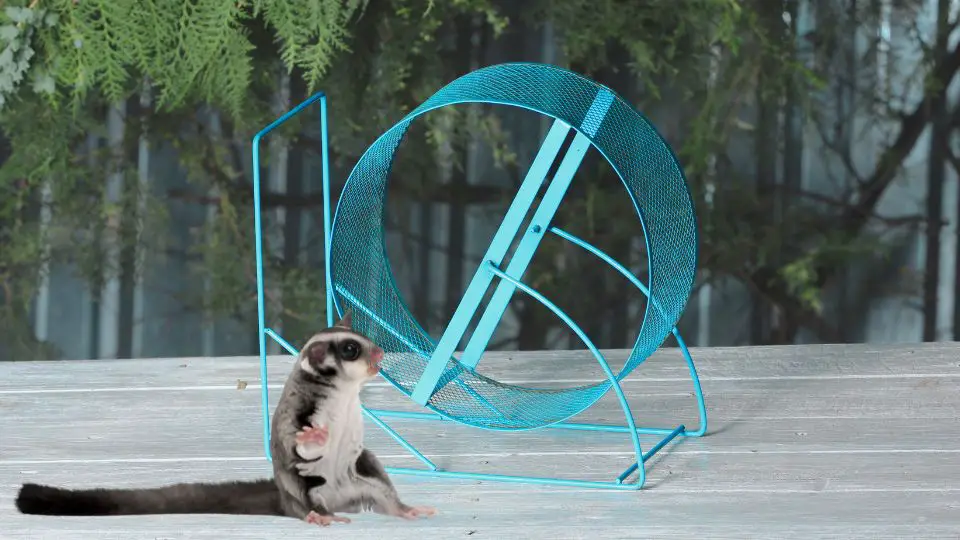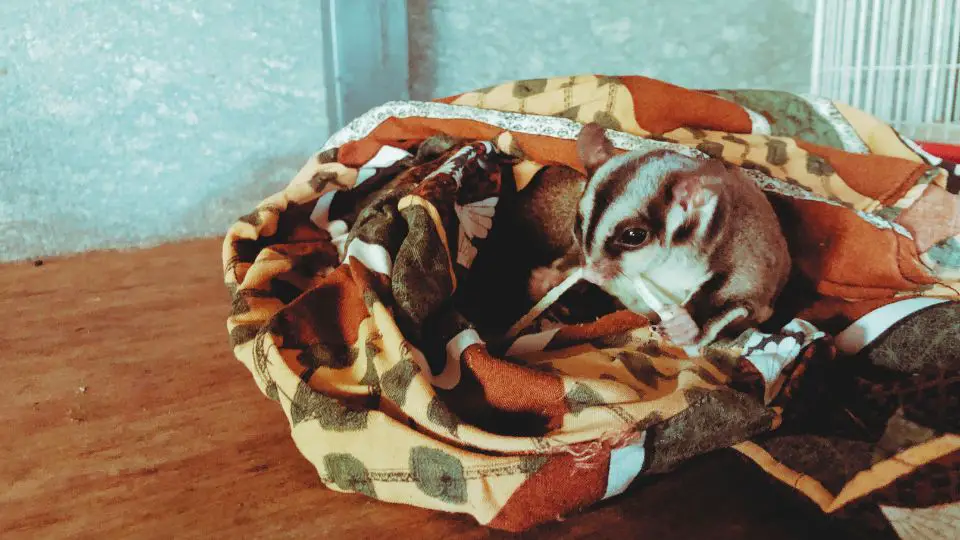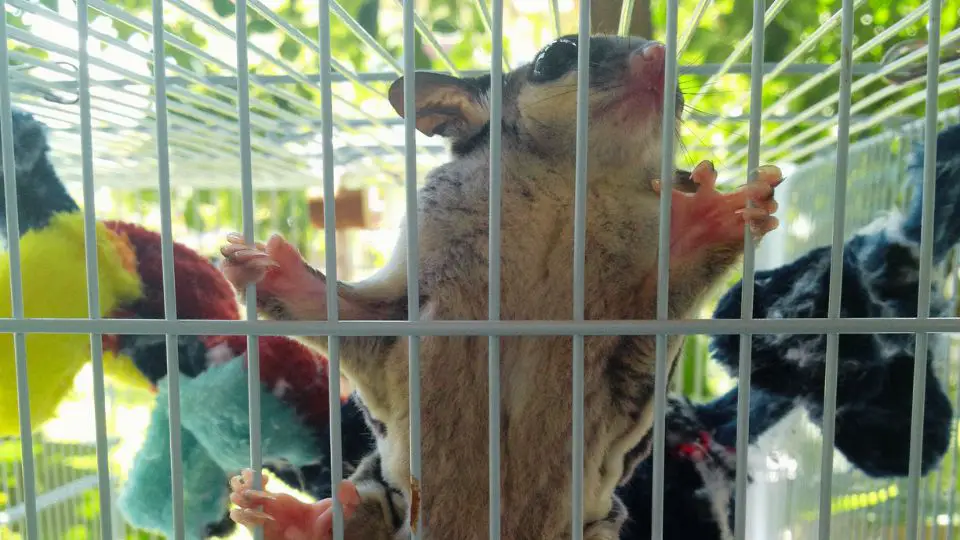You might be wondering if your pet sugar glider is going to bite you. Fortunately, your sugar gliders do not have teeth that grow throughout their life.
Read on for information about sugar glider teeth, and what you can do to help them stay healthy. We also have some tips for keeping your glider’s teeth clean and healthy!
Do sugar gliders have teeth
Sugar gliders do have teeth, although they are quite different from the teeth of most other mammals. Sugar gliders have two sets of teeth: one that grows in when they are young, and another that grows in as they mature. Sugar gliders also have long canine teeth, which they use for defense and for gripping branches while they glide.
Overall, sugar gliders have a whopping 40 teeth, including:
- 5 incisors: 3 on the top jaw, 2 on the bottom jaw;
- 1 canine on the top jaw;
- 6 premolars: 3 on top, 3 on bottom;
- 8 molars: 4 on top, 4 on bottom.
Do pet sugar gliders bite?
While sugar gliders do bite, they do so occasionally and rarely, so there is no need to worry about harm to your sweetie. The only time they do bite is when they’re frightened or need attention. We should add that a sugar glider bite is not poisonous.
Most sugar gliders are not aggressive, so it is not uncommon to see them hissing or biting. Aggressive behavior can occur when a sugar glider perceives a threat or is defending its territory. However, it can be difficult to tell the difference between fear and aggression. For example, if you accidentally open a glider’s cage, he may hiss or bite at your hand.
Some people are concerned that sugar gliders are not friendly and may bite. Although sugar gliders are known for their affection for humans, excessive biting can indicate a health problem. In some cases, excess biting may simply be a result of stress, or perhaps a sign of pregnancy for a female glider.
What kind of teeth do sugar gliders have?
Overall, sugar gliders have a whopping 40 teeth, young, and the second set grows in as they mature. Sugar gliders also have long canine teeth, which they use for defense and for gripping branches while they glide.
Keep in mind that sugar gliders are not rodents, therefore their teeth stay the same length throughout their lifetime. So the next time you see a sugar glider, take a closer look at its teeth – you might be surprised by what you see!
Sugar gliders teeth problems
Sugar gliders often get dental disease because they eat soft, sugary foods. Gliders who have it tend to eat less, drool, paw at their mouths, get tired, and lose weight. When a glider has dental problems, it is usually given antibiotics and anti-inflammatory drugs and fed with a syringe. Abscesses in the jaw should be surgically removed, and infected teeth should be taken out.
While sugar gliders do not have teeth that grow throughout their life, they are susceptible to a number of dental problems. These include:
Tooth decay
Sugar gliders are prone to tooth decay because of their diet. To help prevent this, make sure to give your sugar glider a diet that is high in fiber and low in sugar.
Gum disease
Sugar gliders are also susceptible to gum disease. To help prevent this, make sure to brush your sugar glider’s teeth regularly.
Overgrown teeth
Overgrown teeth can be a problem for sugar gliders. If you notice that your sugar glider’s teeth are getting too long, take them to the vet to have them trimmed.
Sugar gliders tooth decay signs
Sugar gliders often have problems with their teeth, such as abscesses and tooth decay. Sugar gliders are more likely than other animals to have tooth problems because they eat a lot of soft, sugary foods.
This causes tartar to build up, which can lead to tooth decay. In the worst cases, a vet might even have to pull out the teeth. Most of the time, these problems happen when the gliders get older.
If you want to know if your glider has tooth problems, look for the following:
- Yellowing/browing of the teeth;
- Bad breath;
- Bumps under the chin;
- Loose teeth;
- Loss of appetite;
- Weight loss;
Pulling down on the glider’s lower lip is an easy way to check their teeth. Even though this is no substitute for an exam by a vet, it is a good way to see if their teeth are healthy. If you see something wrong, you should take them to a vet, so they can get treated.
Sugar gliders tooth decay prevention
Sugar gliders are omnivores and eat a variety of fruits, vegetables, insects, and small vertebrates. Their diet in the wild is very different from the diet of sugar gliders in captivity. In the wild, sugar gliders eat mainly sap from trees.
This diet is high in carbohydrates and can lead to tooth decay in sugar gliders. To prevent tooth decay, it is important to feed sugar gliders a diet that is low in carbohydrates and high in protein. Insects such as crickets, mealworms, and phoenix worms make an excellent source of protein for sugar gliders. Fruits and vegetables such as apples, bananas, carrots, kale, and sweet potatoes should also be included in
Conclusion
While sugar gliders don’t have teeth that grow throughout their life, they are susceptible to a number of dental problems, including tooth decay and gum disease. To help prevent these problems, it is important to feed sugar gliders a diet that is high in protein and low in carbohydrates. If you notice any problems with your sugar glider’s teeth, be sure to take them to the vet, so they can get treated.







